| On Tuesday March 1st a very valuable and important presentation was made to the Corryong Man from Snowy River Museum & Upper Murray Historical Society. The presentation was the handover of an original copy of Sir Paul Edmund de Strzelecki 1845 publication of a Physical Description of New South Wales and Van Diemen’s Land. The donation was accepted by John Whitehead – Vice President. This rare book contains Strzelecki’s account of his explorations and observations made during his travels through south-eastern Australia and Van Diemen’s Land. Van Diemen’s Land or Tasmania was considered a separate colony by the British Crown at that time. This very generous gift to our Museum was made by Ernestyna Skurjat Kozek and Andrzej Kozek, President and Vice President of Kosciuszko Heritage Inc.
Kosciuszko Heritage is an organisation with many objectives. Principally – the promotion of the contributions made by local and international leaders, particularly Sir Paul Edmund de Strzelecki and General Tadeusz Kosciuszko, whose name is borne by the highest peak of Australia, Mt Kosciuszko; The organisation of cultural events held in Jindabyne, Cooma, the Upper Murray and other suitable locations; The production of radio, press and internet publications, as well as video documentaries, promoting the heroes and the events; The promotion of the contribution made by inspirational and influential individuals – particularly Polish migrants – to Australia’s history and cultural heritage; The preservation of Polish culture and identity for younger generations of Poles; and The promotion of the Polish contribution to the exploration of Australia’s natural features (such as the Snowy Mountains and the Strzelecki Track in South Australia) and the inclusion of the Polish contribution in appropriate references in Heritage Listings at National and World Heritage levels.
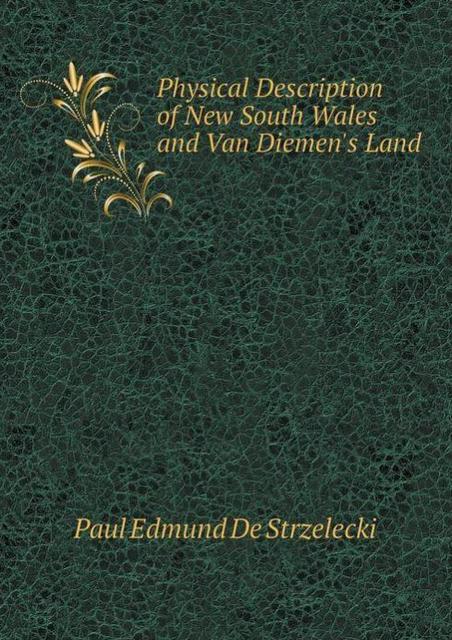
|
Some Background on Strzelecki
After a disappointment of the heart and other personal turmoils Paul Edmund de Strzelecki left his native Poland in 1830 and moved restlessly within Europe, later including England and Scotland. In 1834 he departed from the British port of Liverpool to travel the World. Strzelecki first sailed to North America where he roamed widely in both the U.S. and Canada. From here he found his way to South America, the Pacific Islands - including New Zealand - and Australia, arriving in Sydney in April 1839. At first he confined his excursions to the west of Sydney as far as Bathurst and surrounds where he is reported to have discovered gold. This was more than a decade before Edward Hargraves discovered the same precious metal at Summerhill Creek north east of Orange which started the Great Australian Goldrush.
Returning to Sydney Strzelecki reported his discovery to Governor Sir George Gipps. There are various stories with regard to Strzelecki divulging his discovery, one of them being Governor Gipps saying “Put it away man or we shall have our throats cut.” Whatever the truth he was officially gagged. It was after this that Strzelecki embarked on his long journey of discovery inland, first to the Murrumbidgee where he joined up with James Macarthur from Parramatta and James Riley. Also amongst the party were Charlie Tarra, a native from Taralga near Goulburn Plains and two servants.
With the company complete they then set their course southward to the Upper Murray before venturing on to Gippsland - then not yet named. In Gippsland they met with near starvation and were only saved by Charlie Tarra’s bush skills. Eventually they found their way to Westernport Bay before finally arriving safely at the fledgling settlement of Melbourne where they soon recovered from their trials.
While transiting through the Upper Murray they digressed from their ultimate goal to climb Australia’s highest peak.
From Port Phillip, Strzelecki sailed on direct to Tasmania with the rest of the party going their various ways. After approximately two years Strzelecki decided to move on departing from Sydney in April 1843. He eventually completed his circumnavigation of the Globe arriving in England in October that same year. He made London his new home base and in 1845 Strzelecki became a British citizen.
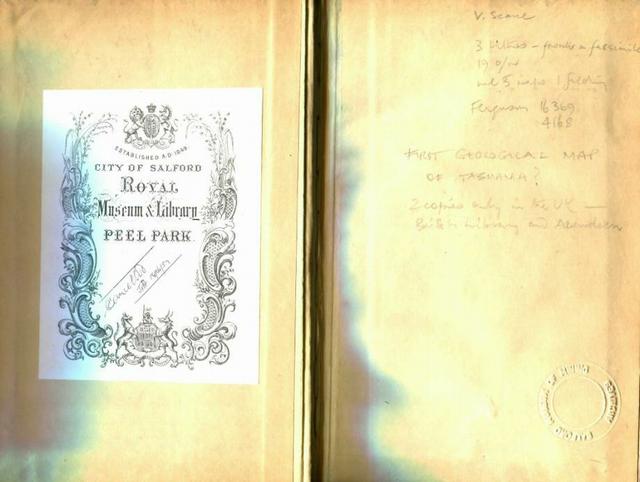
|
Not many Australians would be familiar of Strzelecki’s achievements in later life. Following on from his immense contribution to science (particularly geology) and geography and the publication his book Strzelecki showed his humanitarian side by joining the British Relief Association and setting his hand to help alleviate the rapidly unfolding disaster in Ireland – the great Irish Famine. Arriving on the Emerald Isle in early 1847 the conditions he witnessed shocked him to the core. Not long after disembarking he wrote “No pen can describe the distress by which I am surrounded. It has actually reached such a degree of lamentable extremes that it becomes above the power of exaggeration and misrepresentation”. Many were reduced to eating grass.
While engaged with the B.R.A. Strzelecki displayed outstanding work and great organisational skills. On many an occasion between 1847 and 1849 he dipped his hand into his own pocket to relieve immediate suffering and death. During this time, long remembered as the Great Hunger, it is estimated about a million Irish died from starvation and approximately another million for their own safety fled Ireland’s shores. It is believed Strzelecki’s engagement and guidance alone saved the lives of over 200,000 children. For this work he was commended by both Houses of Parliament and appointed a Companion of the Order of the Bath.
Amongst Kosciuszko Heritage’s objectives was to commemorate 180 years since Strzelecki’s passage through the Upper Murray and his ascent of Mount Kosciuszko by the unveiling of a plaque by the roadside at Welaregang. It was here that Strzelecki and Macarthur and party were hosted for some days in early March 1840 by John and Mary Hay, who then held the Welaregang Sheep Run. This event was to take place in early 2020 but like many best laid plans Covid-19 caused its postponement. The occasion finally took place on the 6th March, 2021.
Some weeks later Ernestyna, Andrzej and Chris, all of who reside in Sydney, returned to the Upper Murray and visited our Museum. Over their few days here they were shown the approximate route Strzelecki and his companions took as they made their way from Welaregang to Towong and up the Swampy Plain River to Khancoban. On this journey they were guided by Jackie a native from Welaregang. From Khancoban they passed over the Geehi Wall and descended to the Geehi Flats where they then ascended a long spur – now known as Hannels Spur – leading to Mount Townsend. Reaching this peak Strzelecki recognised another peak, initially hidden from view, that stood proud of the others which he was determined to climb. As we know he called this peak “Kosciuszko” after the famous Polish General and freedom fighter Tadeusz Kosciuszko.
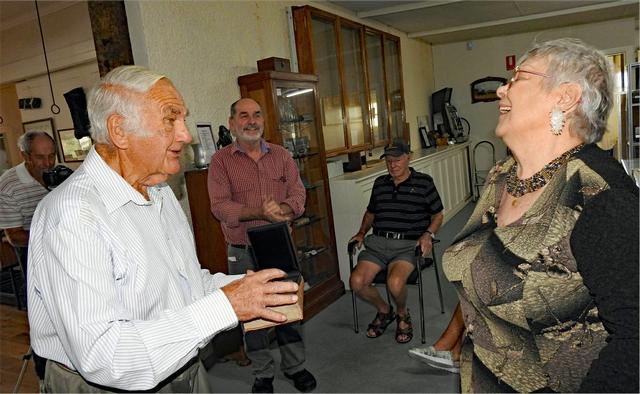
Presentation: the book and the Kosciuszko Bicentennial medal |
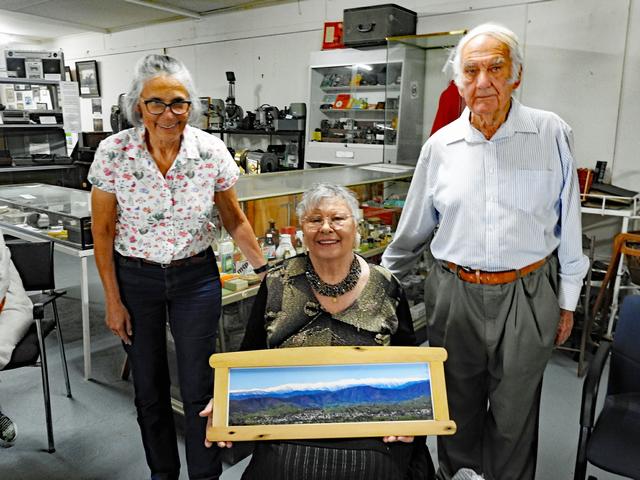
A snap taken immediately after the presentation. Left to Right - Honor Auchinleck, Ernestyna Skurjat Kozek from Kosciuszko Heritage and John Whitehead, Vice President of the Man From Snowy River Museum. John has just given a present in return to Ernestyna depicting Corryong nestled beneath the Snowy Mountains, a picture taken by his son Mark. |
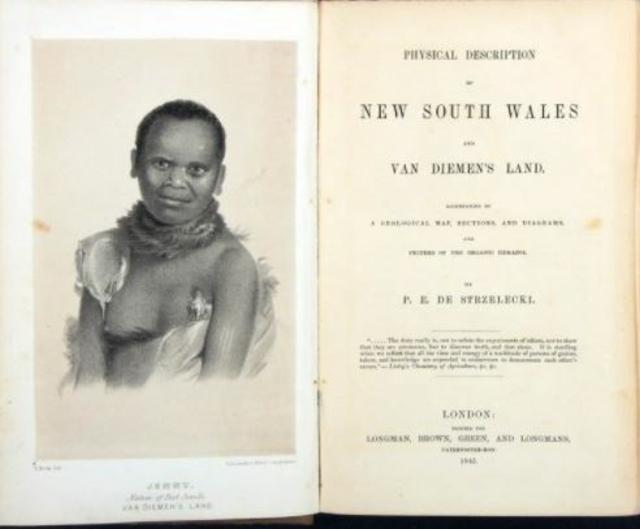
The title page of Strzelecki’s 1845 publication |
On the next day of their visit Ernestyna, Andrzej and Chris were shown through the museum and then taken up the Nariel Valley to the foot of the Gibbo Range again following in the path Strzelecki and party as they made their way over the Great Divide into only partially explored country (Angus McMillan preceded him) which he named “Gipps’ Land”.
In appreciation of these few days of hospitality in 2021, Andrzej and Ernestyna sought out and acquired an ex-British library first edition copy of Strzelecki’s sojourn in Australia for the Museum. This was a very generous and unexpected gift which we hope one day to make the centrepiece of a display recognising Strzelecki the explorer. In March 1840 Strzelecki passed through our district and 182 years later, thanks to Kosciuszko Heritage, he, in a sense, returns in the form of his writings.
John Murphy
written for the Corryong Courier & Puls Polonii
| 

